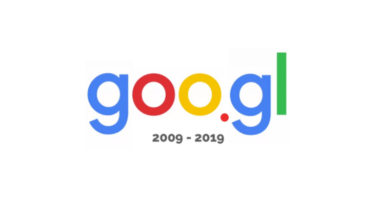You’re probably already familiar with the YouTube recommendation sections, which are dominated by videos about how to make money on YouTube. However, there are only a few videos about how to get your videos recommended in the recommendation sections. I’ve spent some time studying these recommendations and have come up with this handy guide.
You can list your YouTube channel in the recommended videos section by contacting the YouTube team. You can also work with the YouTube team to get your channel listed in other ways, such as in the featured videos section.
Why is it that you can get recommended videos that are really good but you can’t get recommended videos that are really good? This is a question that I asked myself a long time ago, and have been trying to answer ever since. My first step was to find out what makes one video really good and another not so good. The answer I found was simple: the content. What makes one video more relevant than another isn’t the same across the board.. Read more about youtube recommendation settings and let us know what you think.
YouTube is well-known as the world’s second-largest search engine.
However, did you realize that the majority of YouTube video viewing does not come through the search bar?
In reality, YouTube has acknowledged that its recommendation system is responsible for more than 70% of all time spent watching content on the network.
That means that if you want more people to see your YouTube videos, you should learn how YouTube recommendations work.
What Does “YouTube Recommended” Mean?
YouTube, like every other website, wants you to stay as long as possible. The more videos you view and the longer you watch them, the more adverts you’ll see and the more money you’ll earn.
That is precisely why YouTube has a recommendation feature. It’s intended to steer people toward material they enjoy and actively seek out depending on a variety of characteristics (more on that later).
There are two areas on YouTube where you can find recommendations:
- On the front page of the website.
- Alongside the video you’re currently watching, in the “up next” section:
The Advantages of Subscribing to YouTube’s Recommended Sections
The value of the YouTube recommendation engine cannot be overstated if your goal is to increase video views on YouTube.
Most YouTube viewers utilize YouTube suggestions on a regular basis, whether or not they are aware of how it works. According to a Pew Research Center survey, 81 percent of users watch recommended films on occasion, while 15% do so on a daily basis.
Importantly, YouTube has a younger audience, with 95 percent of 18 to 29-year-olds in the United States utilizing the platform. According to Pew Research, younger viewers are more likely to discover new content using YouTube’s recommendation system. More over one-fifth of users in that age range view recommended movies on a regular basis, compared to only one-tenth of users 65 and older.
The study by Pew Research also shows how effective a YouTube suggestion can be. It analyzed 98,508 videos recommended by the YouTube algorithm using the YouTube API. Those films’ view counts increased by an average of 38.5 million views throughout the course of the study’s six weeks. When Pew first discovered one video, it had 34,000 views, and by the time it was recommended a third time, it had nearly 30 million.
In other words, if YouTube recommends your video, your visibility will skyrocket.
Sections on YouTube that are recommended Factors Affecting Algorithms
YouTube’s recommendation algorithm, like Google’s, is kept under wraps and is constantly changed and tested in order to provide the most accurate and helpful results. We do know, however, that it considers a variety of signals, including:
- your search and viewing history (provided you have enabled them)
- subscribe to your favorite channels
- Contextual elements such as your location and the time of day are important to consider.
Furthermore, YouTube considers a video’s retention rate, or the average percentage of people who watch it, as a measure of its quality. A high retention rate suggests that a video is relevant, high-quality, and entertaining, making YouTube more likely to promote it to other users.
YouTube also polls users on a regular basis about their experiences with the platform, whether it’s specific videos or the YouTube recommendation system in general. In order to provide the greatest experience, it leverages this direct feedback to inform future algorithmic judgments.
Tips & Tricks for Getting Your Videos Listed in YouTube’s Recommended Sections
Every website owner wants their site to be at the top of Google’s search results, and every YouTuber wants their videos to be suggested by the platform. Unfortunately, with over 500 hours of video posted per minute to YouTube, not all of them will be successful.
To enhance your chances of receiving a coveted YouTube recommendation, follow these six methods.
1. Make sure your metadata is up to date.
The YouTube algorithm is intelligent, but it is not human. It doesn’t literally “view” a video before making a recommendation. Instead, it makes intelligent decisions based on user behavior and metadata.
Increasing your visibility in YouTube recommendations can be as simple as optimizing your metadata (and also in search results). Metadata optimization entails concentrating on your:
- description of the video
- titles
- tags
Descriptions of Videos
The description is the text that appears underneath your videos. It not only explains what your content is about, but it also assists people in finding videos in the first place. Your descriptions should include the following:
- describe the video in detail
- Describe the kind of content you produce.
- persuade viewers to subscribe to your YouTube channel
- include links to other videos and playlists that are relevant
Titles
Consider the title to be the headline of your video. Its task is straightforward: persuade people to click. To accomplish this, it should:
- include relevant keywords near the beginning of the title
- appropriately depict your video’s content
- where applicable, include episode numbers
- be updated on a frequent basis to keep your information fresh
Tags
Tags are search and recommendation keywords that help people locate your videos. By right-clicking on the video page, selecting “View Page Source,” and searching for “keywords,” you can see a video’s tags. Your tags should include the following:
- Describe your content completely and accurately.
- integrate keywords from the title of your video
- appear in chronological sequence of importance
- to stay within the 270-character restriction
2. Make Your Content More Local
I already described how YouTube considers your location and time of day when recommending material.
That means you’ll need to generate content that’s relevant to your audience’s region and optimize it for YouTube recommendations and search bars. To do so, localize your video metadata to ensure that your material is found.
Localizing your metadata, fortunately, does not necessitate uploading numerous versions of the same video, each with its own set of descriptions, titles, and tags. Instead, simply follow these six steps to convert it through the YouTube user interface or by submitting a CSV file with your translated metadata:
- From the Content Delivery Templates page, download the template “Video – Localization Update.”
- Fill up the template with your translated metadata.
- Save it as a.csv file.
- Click “Validate & Upload” in the “Content Manager” menu.
- Select your.csv file by clicking “Select Files.”
- Select “Process Package” from the drop-down menu.
3. Take Advantage of Popular Topics
Localization entails more than just changing your metadata to accommodate several languages; it also entails developing content that is relevant to the audiences you want to target.
After example, when outlining the factors that drive its YouTube recommendation engine, YouTube uses the phrase “locally relevant news.” In short, you have a better chance of getting a YouTube recommendation if you develop video around popular topics that are relevant to your audience.
Another Google tool can assist you in locating such hot subjects. Explore the “recently trending” section of Google Trends, which displays results from 47 countries. Here’s how it looks for the United States:
On July 11, we know those were the issues that American audiences were looking for. We may get even additional information, such as related inquiries, by clicking into each of those samples. These provide additional context to the search and reveal what people are looking for:
If you had a basketball channel, you could make a match preview emphasizing key players like Devin Booker and Giannis Antetokounmpo, or a report reviewing the score and highlighting key statistics based on this information.
What if the findings are too broad and you need to delve further into a certain subject? That’s something Google Trends can accomplish as well. Simply go to “Real-time Search Trends” and select from one of five categories:
- Entertainment
- Health
- Sci/Tech
- Sports
- The most popular stories
4. Make the beginning of your video as interesting as possible.
Remember that whether or not other people who clicked the same video watched it all the way through is a big element in getting a YouTube recommendation.
In truth, there’s no assurance that people will watch your video after they’ve clicked it. According to one study, over 56,000 YouTube views were evaluated across four modest but effective YouTube channels, with an average time of a view of 50-60% of the overall length. Those are relatively high-performing channels; many others have substantially lower performance.
What can you do to encourage people to watch your videos all the way through?
YouTube has long stated that the first 15 seconds of a video can make or break it. Get your audience’s attention right away by:
- attracting their attention right away, either with eye-catching imagery or by saying something unexpected or unique
- Immediately stating what your film is about, so viewers know they’ve arrived at the proper spot
- without giving too much away about what you’ll be talking about later in the video
5. Encourage Viewers to Like & Share Your Content
YouTube utilizes a variety of metrics to determine the popularity of a video, including:
- rate of click-through
- average view duration
- the average percentage of people who have seen it
- dislikes and likes
- surveys
How does it manage to collect that much information? When a video is posted, YouTube displays it on the homepage for a select group of users. That video will appear on more homepages if they click on it and participate with it by viewing it until the end, sharing it, or clicking “like.”
Popular videos can easily spread in this way. They get a lot of views and engagement, so they appear on a lot of homepages, which helps them earn even more views and engagement. It’s a positive feedback loop.
As a result, it’s in your best interests to encourage as many people as possible to like and share your work. That’s why so many YouTubers encourage their viewers to “like” their videos after they’ve watched them.
Also, keep in mind that your most devoted viewers are the ones who are most likely to interact with and share your material. Someone who has seen 20 of your videos from beginning to end is more likely to share your next video than someone who has never heard of you before.
That’s why, at the end of my videos, I always invite viewers to subscribe to my channel:
6. Add Your Own Thumbnail Images
You’ll need people to watch your videos in order for the YouTube recommendation engine to notice them. Adding personalized thumbnails to each video you post is one of the finest methods to do this.
The thumbnail displays directly above the video title in lists of video results, therefore it plays an important role in convincing people to click. While YouTube will cheerfully create a thumbnail for you, I strongly advise you to create your own.
According to YouTube, 90 percent of top-performing videos have personalized thumbnails, and while we can’t say it’s because of the thumbnail, the correlation is too high to ignore.
To make custom thumbnails that people can’t help but click, follow these steps:
- So that you can capture numerous photos, think about your thumbnail image before shooting the movie.
- Check out similar video thumbnails to make sure yours stands out.
- Make your image as large as possible while staying under the 2 MB limit.
- Keep in mind that the optimal resolution is 1280 x 720 pixels (or an aspect ratio of 16:9)
- JPG, GIF, BMP, or PNG are all good options for thumbnails.
Last but not least, you’ll need to validate your YouTube account before you can post a custom thumbnail image.
Most Commonly Asked Questions
Will the fact that my past videos haven’t gotten much attention hinder my chances of getting in the suggested section?
Most likely not, but if your other videos don’t have high user retention or engagement (likes and shares), YouTube is less likely to recommend them.
When my video hits a suggested segment, will I be notified?
Because of a dramatic increase in views or new subscribers, you’ll notice if a video has made it into the YouTube suggested section. If a video appears to be gaining in popularity, you’ve most certainly landed a top spot for your target demographic.
How often does YouTube’s algorithm change?
YouTube’s algorithm has seen several big changes over the years, ranging from optimizing for clicks and views to favoring watch time and happiness. Also keep in mind that YouTube uses a variety of algorithms to rank material in various areas where videos appear, such as the home page, suggested videos, and search results, all of which are changed on a regular basis.
In YouTube, where do the suggested sections appear?
YouTube suggestions can be seen on the homepage and in the “up next” section.
Conclusion
You can’t afford to disregard the YouTube recommendation system if you want to monetize your YouTube channel or gain a lot of views. It’s the single most important component in attracting people to watch your films after they’re on YouTube.
Fortunately, if you’re already making high-quality videos, you won’t have to do anything drastic to get your films listed in the YouTube suggested section. You’ll have the best chance of grabbing YouTube’s attention if you optimize your metadata, focus on boosting engagement, and create engaging thumbnails.
What strategies do you employ to increase viewership of your YouTube videos?
- Unlock large volumes of SEO traffic with SEO. Take a look at the outcomes.
- Content Marketing – Our team develops incredible content that is shared, linked to, and drives traffic.
- Paid Media – successful paid solutions with a measurable return on investment.
Getting Listed in the YouTube Recommendation Section can be done by just using the below mentioned steps.. Read more about youtube recommendations and let us know what you think.




